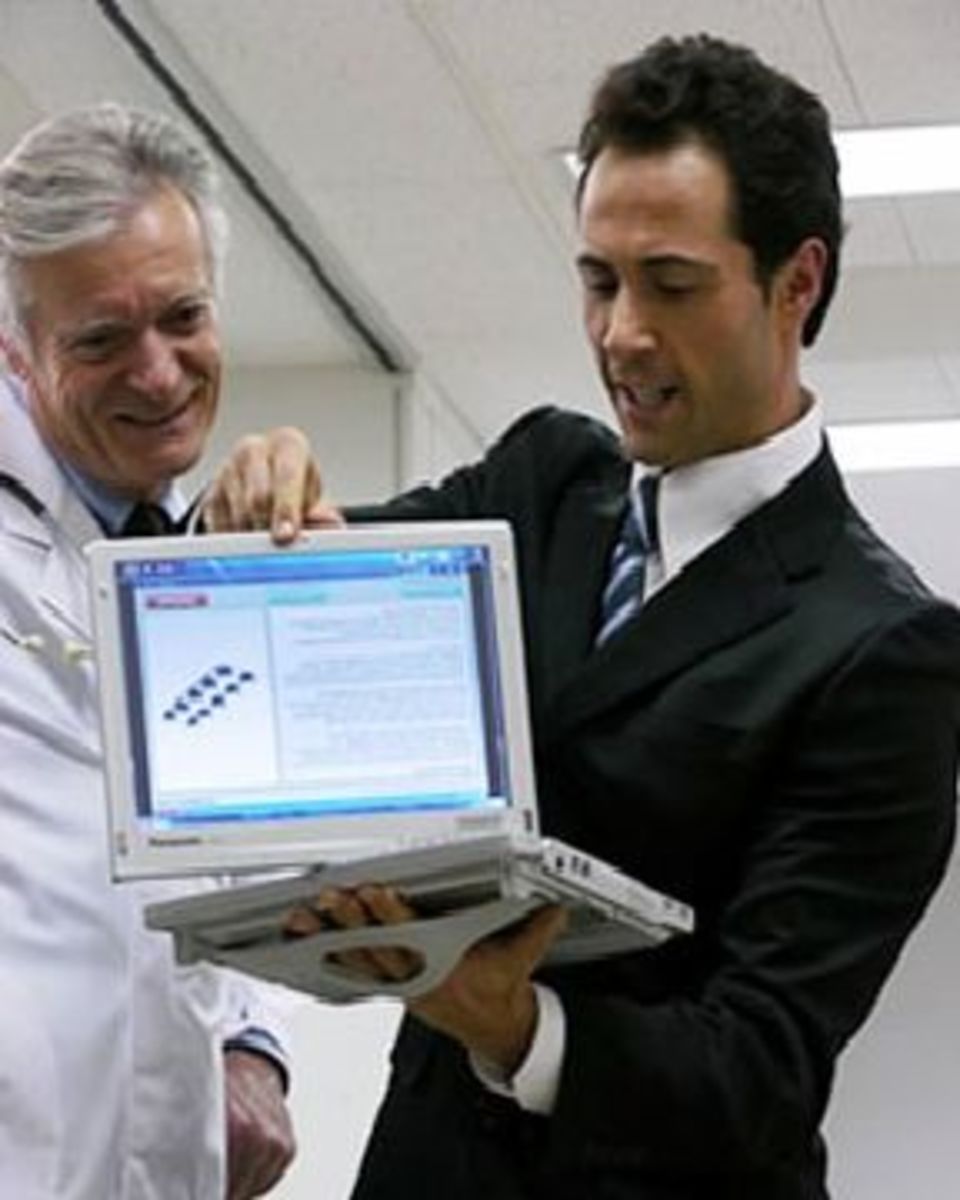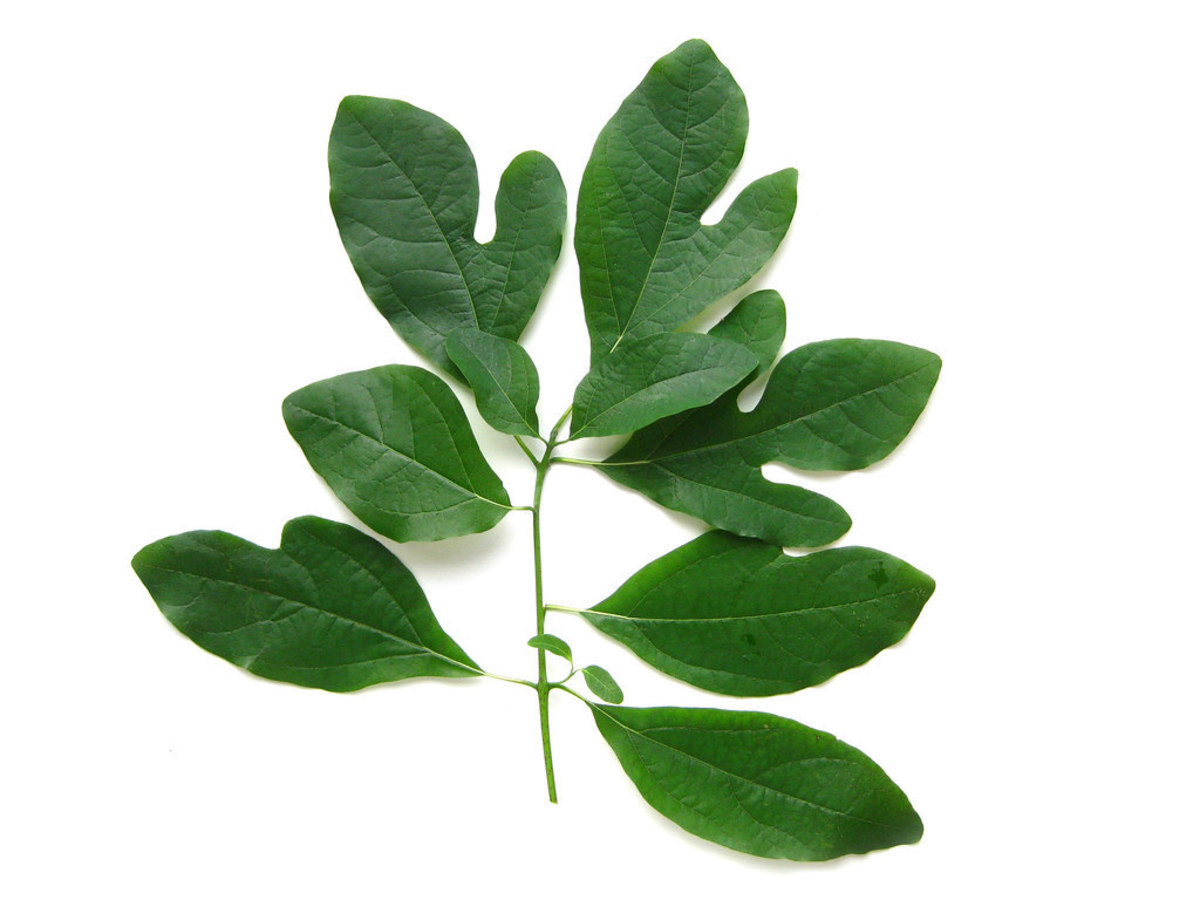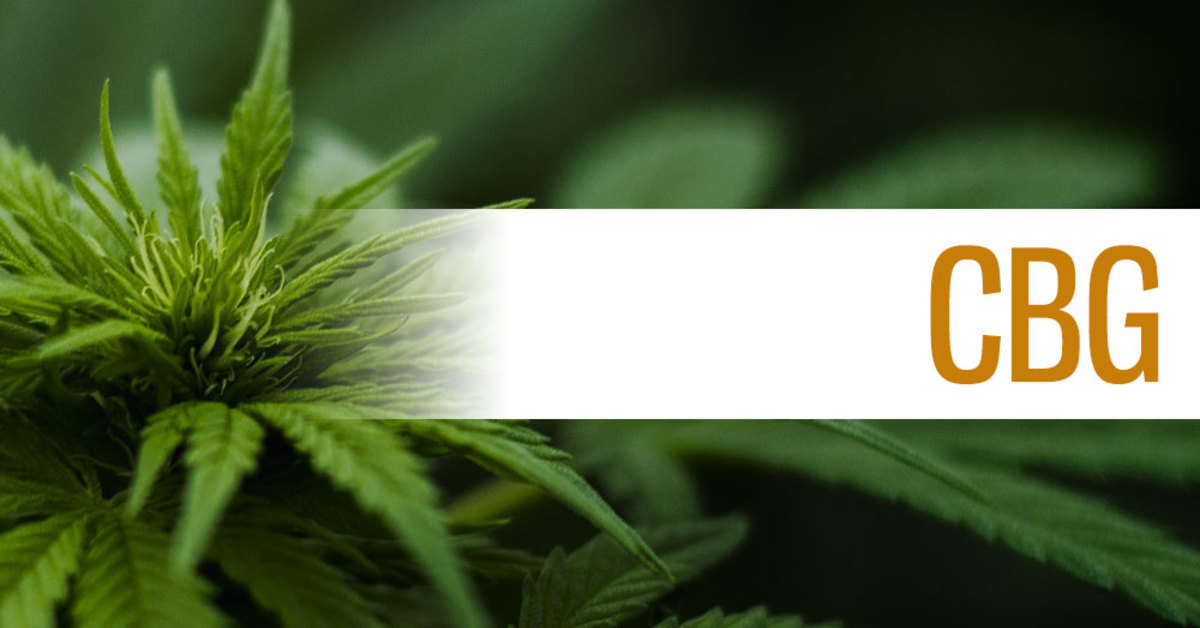The Medical Uses of Marijuana

Introduction
Is marijuana the new miracle drug? Well, many people with ailments such as seizures, glaucoma, multiple sclerosis, etc., believe that the use of marijuana as a medicinal product seems to alleviate some of the symptoms associated with these ailments that existing prescription drugs do not eliminate. This attitude has led to the recent legalization of marijuana for medicinal use in several states. But on the flip side, marijuana like any other drug also has its side effects beside it beneficial effects as claimed by many users. If marijuana is to become a mainstream drug for the treatment of these of these ailments; the Food and Drug Administration (FDA) eventually will have to step in to make the public more aware of Dronabinol, a synthetic, pharmaceutical version of the active ingredient found in marijuana which is available as a prescription. Using this prescription may help get rid of the stigma associated with using marijuana as a medicine.
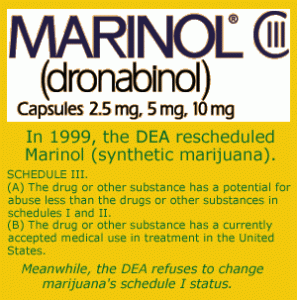
Marijuana Facts
Marijuana is a mind-altering drug and because of this characteristic it does affect your behavior and other physiological activities in the body. It has been used for this reason for medical, recreational and religious purposes for more than 3000 years.Recently, several laws in the state of Colorado became effective on January 1, 2014, allowing people to grow, harvest, and sell this plant as recreational marijuana. The main psychoactive ingredient in marijuana is THC short for delta-9- tetrahydrocannabinol. THC occurs in different concentrations or potencies depending on which part of the marijuana plant is being used to obtain this active ingredient. The oil from the plant is the most potent at about 60% of the THC content, the flower contains about 5% of the THC content, and the resin contains about 20% of the THC content. Furthermore, there are 84 other active cannabinoids in the plant. The potency of marijuana can be control by mixing each part of the plant in varying proportions when making a mixture. Medicinal marijuana is generally in the lower potencies and is generally ingested by mouth or drank as a tea. However, when marijuana is taken by mouth it must go through the liver like most drug taken orally. Once in the liver the active ingredient THC (delta-9-tetrahydrocannabinol) is converted to the more potent form, delta-12-tetrahydrocannabinol. It can take up to an hour for the drug to be absorbed into the bloodstream by this route. A course the most popular way to introduce it into our system is by inhaling it into our lungs as smoke where is it rapidly absorbed into the bloodstream.
The Effects of Marijuana on the Body?
Being the psychoactive drug that it is marijuana acts as a cannabinoid in our body. That is, the active ingredient, THC, attaches itself to the same receptors that chemicals in our brain attach themselves to help with activities such as neural communication. These same chemicals also help in the functioning and development of the brain. However, THC elicit a stronger response than the cannabinoid chemicals produced in the brain.
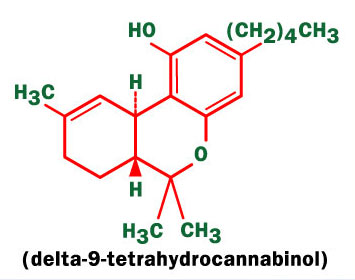
The higher response received by receptors is what manifest as feeling relaxing and mellow. Other feelings such as a feeling paranoia, lightheadedness, and haziness. THC also causes your pupils to dilate and increases your sensory perceptions.
The cannabinoid receptors are distributed throughout the body but they are more concentrated in three specific regions of the brain. These regions are the hippocampus, basal ganglia, and the cerebellum. The hippocampus is responsible for short term memory and users of marijuana have reportedly experienced some memory loss due to the effect of THC on the cannabinoid receptors. The cerebellum is the region of the brain responsible for muscle coordination and under the influence of marijuana users generally become uncoordinated in their movements. Finally, the basal ganglia also controls muscle movements but in addition it controls unconscious muscle movements such as the muscles of the heart. This is why marijuana users have rapid heart beat after marijuana enters their body. In extreme cases marijuana use has been linked to heart attacks.
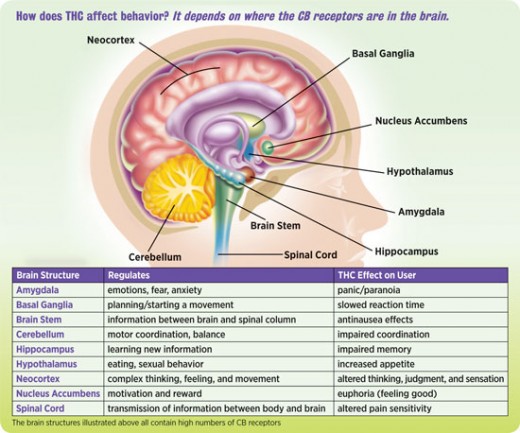
Obviously, the strongest effect of THC occurs in the first few minutes after entering the bloodstream but the effects wear off after 1-2 hours. With a half-life of 20 hours to 10 days it will take some time for all traces of THC to leave your body. For example, if you injected 1 mg of THC into your blood and the half-life of THC is 20 hours this means in 20 hours you would still have 0.5 mg of THC in your blood. In 40 hours it would be 0.25 mg of THC still remaining in your blood. This is why it is so difficult to pass a drug test for marijuana use because it going to take some time to excrete all the THC from your urine, blood, saliva or hair. For instance, the metabolites of THC can be detected in your hair up to 90 days past use and several weeks in urine after use.
The Claimed Positive Effects of Marijuana on the Body
Despite these bad side effects that marijuana has on the body some users claim that there are some medical benefits of marijuana when it is ingested or inhaled into the body. For example, many treatments for cancer and AIDS patients cause undesirable side effects such nausea and loss of appetite. Marijuana does the reverse by suppressing nausea and stimulating the appetite in these patients. For some women experiencing pain from menstrual cramps, marijuana seems to work as a pain reliever. Finally, marijuana seems to relieve the pressure in the eye that causes glaucoma and also reduces the occurrences of muscle spasms in multiple sclerosis patients.
The use of marijuana in children has been a controversial one. Some parents of children suffering from seizures have observed that marijuana reduces the occurrence of seizure significantly in these children. However, the effect of marijuana on the developing brain of young children is one of the concerns that some pediatricians have with them taking marijuana for medicinal purposes. The reason being that there are no studies on the long term effects of marijuana on the brains of children. Besides, marijuana use is addictive. I would guess this is why no doctors have prescribed Dronabinol to children to control their seizures.
Current Status of Marijuana for Medical Uses
As of October 2015, 23 states and Washington D.C. have legalized the use of medical marijuana with possession limits and fees varying from state to state. Click here to see the list of states where the use of marijuana for medical purposes is legal. For example, in California you can have as much as 8 oz. of marijuana and be in possession of 6 mature plants or 12 immature plants. In Alaska, Montana, and Nevada you can only have 1 oz. of marijuana. Oregon and Washington have the highest allowable amount of marijuana at 24 oz. There are four states with pending legislature to legalize marijuana for medical use, namely, Minnesota, New York, Ohio, and Pennsylvania. Then there are some states that have voted on legislation to legalize marijuana and failed such as Alabama, Iowa, Florida, Kansas, Kentucky, Maryland, North Carolina, etc. Even though marijuana is legalized in the states mentioned above it is still classified as Schedule 1 controlled substance under the Controlled Substance Act because marijuana has a strong potential for abuse and it is addicted. Furthermore, the top 17 hospitals as ranked in the U.S. News and World Report Magazine “Best Hospitals 2011-12” have not stated any position on medical marijuana.

Conclusion
As you can see, the proponents for medicinal marijuana still have a long ways to go and many obstacles to overcome before it become fully acceptable in society as a so called miracle drug since it appears to alleviate many symptoms of various ailments. As far as children are concern, I think there will be a prescribed form of THC like Dronabinol for children to get the needed treatment for their seizures without associating themselves to the stigma associated with the raw form of marijuana. On a final note, there are currently two other pharmaceutical drugs based on THC such as Sativex (Britain) and Nabilone (US), prescribed for pains and nausea and surely there will be more in the future.
© 2013 Melvin Porter


